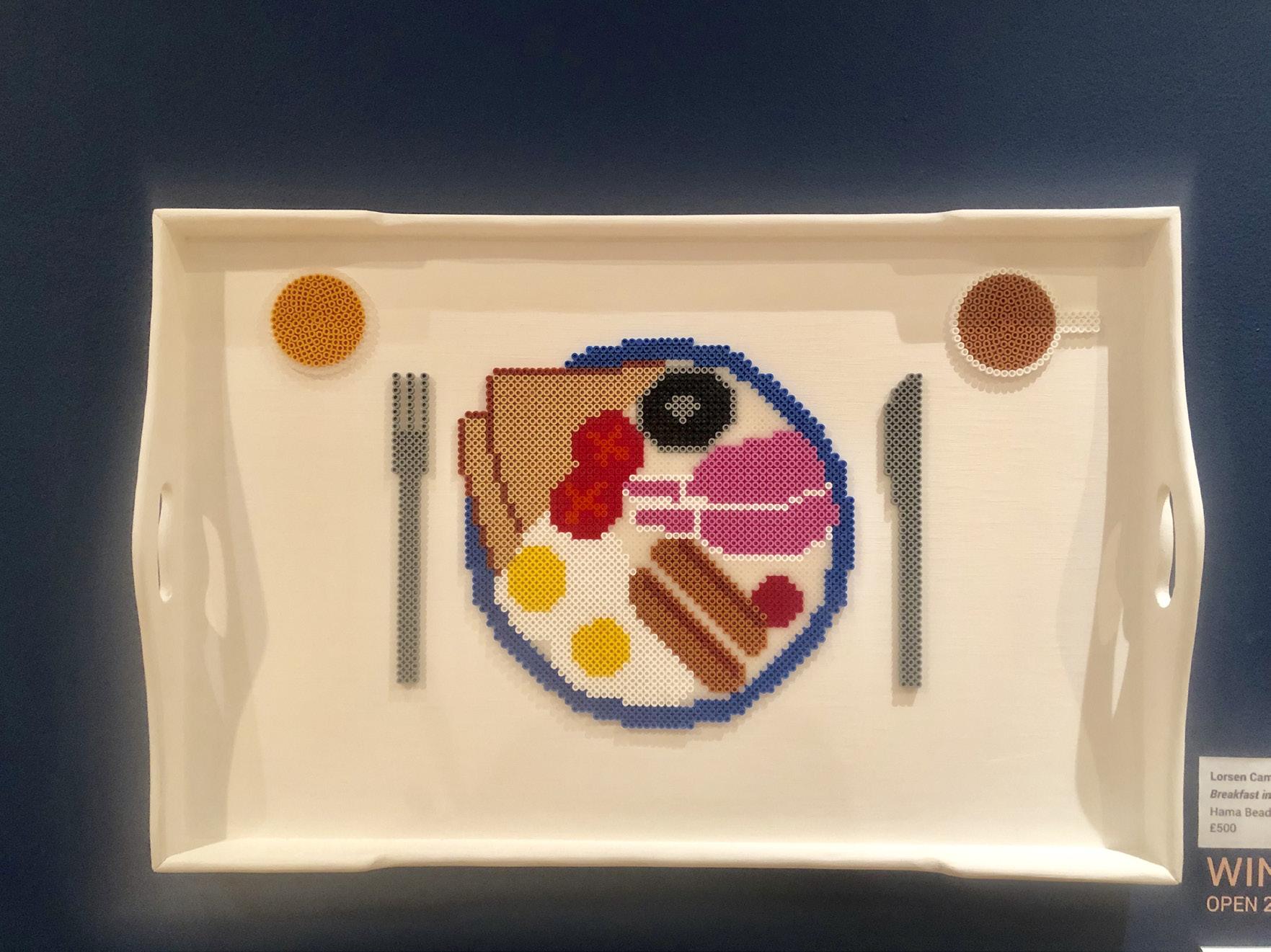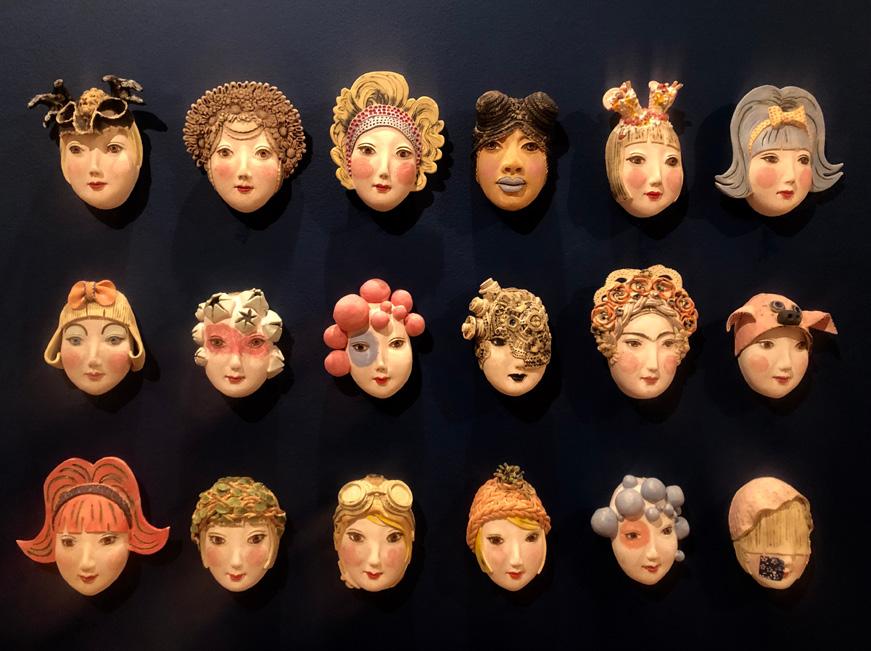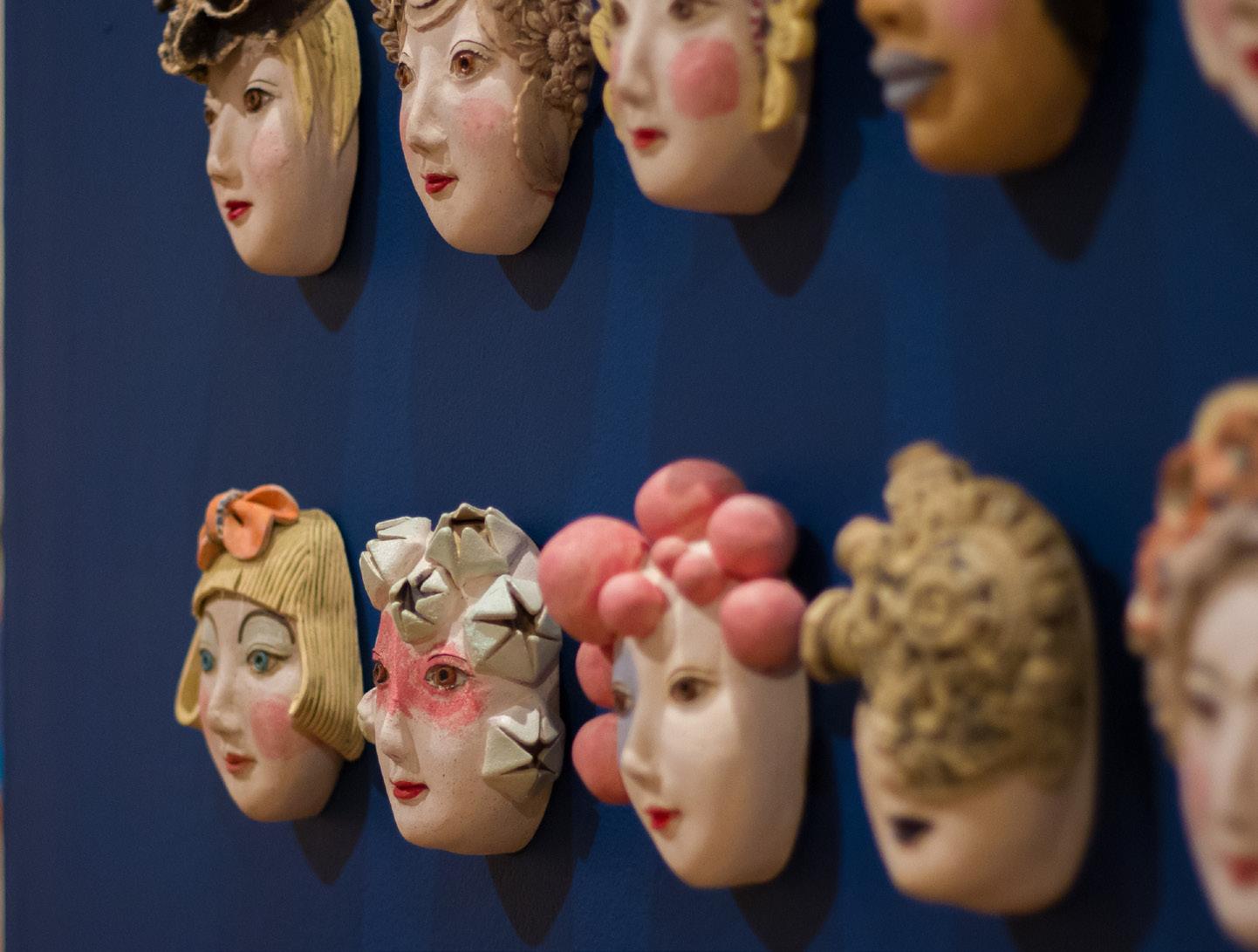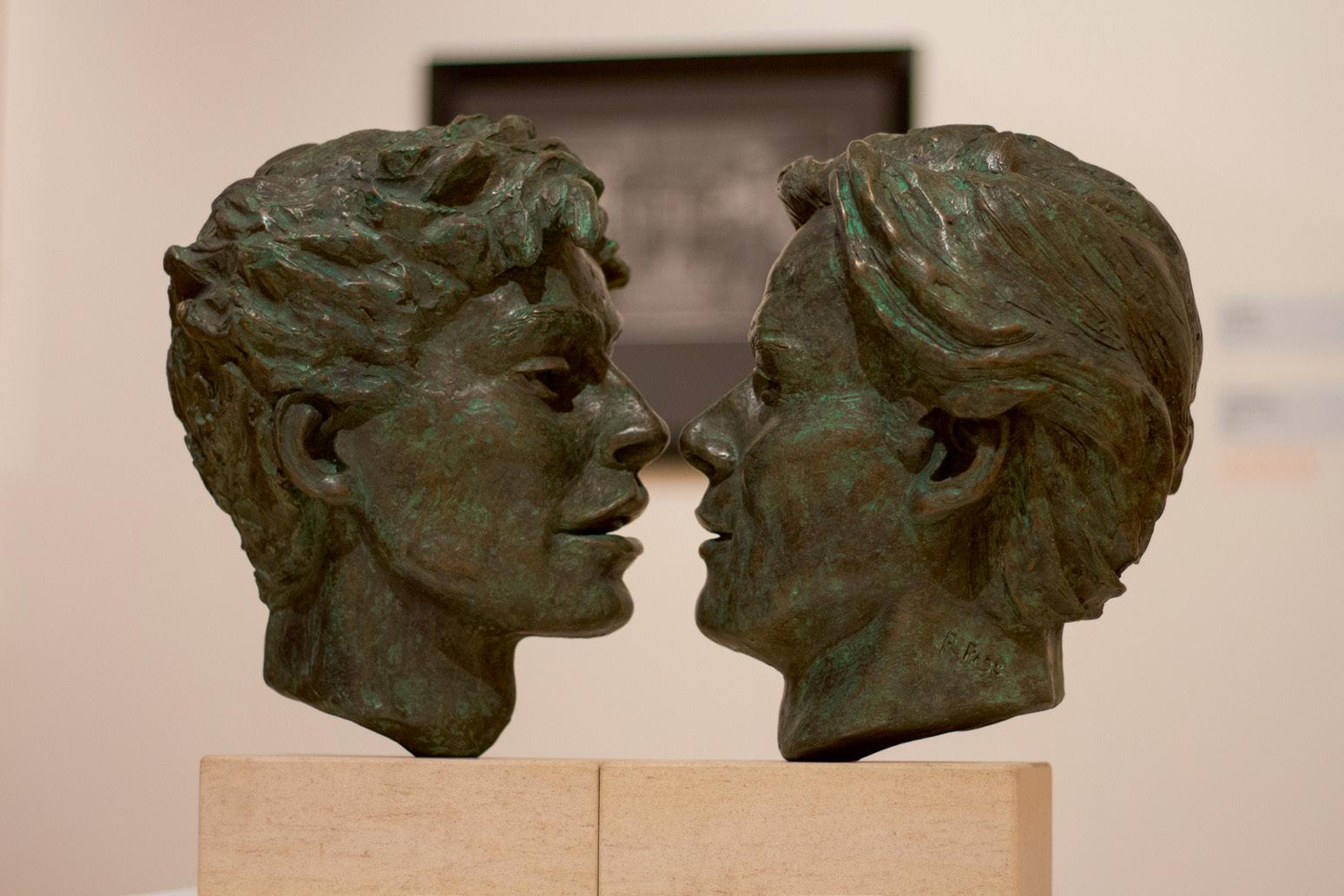
7 minute read
Leamington Open
Dennis McWilliams reviews the 2019 Leamington Open Exhibition
Dennis McWilliams is a keen viewer of exhibitions with a distinctive outlook on art.
Advertisement
Leamington Art Gallery 15th March – 17th May 2019
Iunderstand the 2019 Open was very popular in respect of visitor footfall. The comments diary was full of entries – enthusiastic and critical.
Entries were eligible from Herefordshire, Shropshire, Staffordshire, Warwickshire, Worcestershire and the West Midlands Metropolitan districts. Of those exhibited the majority are from Coventry and Warwickshire, none from Herefordshire, Staffordshire, or Shropshire, it seems.
Works could comprise painting, sculpture, printmaking, drawing, photography, installation work, video and computer generated imagery, ceramics, textiles, metalwork, glass, jewellery, woodwork and mixed media.
Artists were allowed 2 entries. Works had to be for sale.
270 works were submitted. 140 were viewed. 43 were selected. The winner was the unanimous choice of the judges, Lorsen Camps’ Breakfast in Bead, receiving a prize of £1000. The “People’s Choice” award of £500 went to DJ’s Newgale. Several works were commended.
The judges were Mark Essen, Artist and Lecturer at Warwickshire College; Annelise Hone, Collections Manager at Compton Verney; and Jeannie Moncur, Artist and Creative Director, Vitsoe.
Of the works exhibited one was in watercolour; five in oils; eight acrylic; five monoprint, linocut, etching or digital print; three were drawings, one pencil, one with ink, one digital; five were mixed media;
there were three sculptures: one resin; one epoxy putty and papier-mache; and one cardboard with acrylic paint; three works were of fabric/cotton; three were ceramic; there were five varied photograph prints, two film and two giclee prints. There was no glasswork, metalwork, or jewellery. Two include woodwork one a fine wooden shelf (by Vitsoe?) on which the wonderful tiny ceramic lachromatories of flowers extinct in Warwickshire by Wendy CampbellBriggs stand, eponymously titled Extinct. If there is an influence from Ed de Waal’s work, it is a respectful and honourable one.
The companion folder of text and drawings by Corinna Spencer to accompany the lachromatories has clearly been much appreciated.
Judge Mark Essen is recorded stating
“The works all shortlisted for the prize were noted for not only for [sic]
Below: Lorsen Camps Breakfast in Bead Hana beads on reclaimed tray courtesy of Leamington Art Gallery
Bottom: Wendy Campbell-Briggs Extinct Ceramic American oak and paper by permission of Wendy Campbell-Briggs and Corinna Spencer

their skill in handicraft but also the context of their work.” whatever that means.
Jennie Moncur stated “The work selected was done so, for individual merit as well as representing the breadth of technique, expression, subject, and execution produced in the locality.”
It follows that the judges’ selection was not solely on artistic

Above: Jenny Chan Divas Wall Masks Ceramic courtesy of Leamington Art Gallery Right: Detail
merit. This is apparent from the choice across the range of media and techniques I summarised above.
There is something to be said for this approach, which to my mind is preferable to theme selected works, or to privilege painting and sculpture, or maybe to impose a requirement of “seriousness” in some substantial degree.
But I am inclined to wonder if works submitted by artists that would otherwise sail into the exhibition “on individual merit,” to repeat Jennie Moncur’s words, were excluded to favour works representing “the breadth of technique…..” or “context” criteria adopted.
That said there is a great deal of pleasure to be taken from the artistic techniques displayed, not to be diminished by the term “handicraft” that Essen uses.
To take a few of many examples: John Martin’s Blue Ladderway mixed media linocut was a delight to keep returning to. A bold structure of line and shape – ladders in the mine - and colours out of the best of John Piper’s palette. So to was Samuel Vizor’s Lost Pets 1, with its crazy foxes (reminiscent of Yinka Shinibare?). As were Janet Saunders appealing two etchings. Locality has nothing to do with this.
It is difficult to make best use of this gallery’s space. The curator made good choices and most artists will be pleased, I imagine. The placement has drawn in and retained visitors, I believe; perhaps largely due to seeing Paul Crook’s Yellow Escalator face on. In fact it is better viewed from a distance.
That said some rather undeserving pieces appear to me to function partly to occupy space or add size. Entries could be up to 3m H by


2m W. Most shown were smaller. Size does not matter, of course, unless it does.
Standing back to make a few personal thoughts, I found Kathy Webster’s Samuel’s Paintbrush touching, intelligent, beautiful and sensitive – a gem in the exhibition. Morandi comes to mind for the best of reasons. This work was commended.
Hers and some other individual works led me to want to see a fuller exhibition by the artist - Lizzie Cariss’s Freight Train 2, for instance. She is a bold confident painter, accomplished in colour, structure and tone, creating a semi-mystical experience of place and movement. Feeling and truth are here. Fortunately two works by Amanda
Hartland were included – good fun, fine technique – also truthful.
Of the photographic works selected, I was struck by Jo Lewis’s One Way Ticket. I am not qualified to critique photography, but for me it radiates significance and impact. Maybe there is reference to Brief Encounter, possibly The Last of England. But the work stands on its own. I came to like both Belgrade Shadow by Kevin McInerney and 7 Miles of solitude by Tanya de Lange. Cristina Selestini’s Frida, in pencil on Fabriano paper, also presented to the visitor on entry. Technically it is very fine, but there is more. The eye moves back and forth from Frida Kahlo’s face on the T-shirt, to the face of the girl wearing it. Feelings and thoughts rebound. It is rightly commended, occupying the mind. D J’s Newgale and Caius Dutton’s Prowling Dog, like Freight Train 2 are in oils. They might have been commended, having a presence and attraction conveying mood and feeling. The light in Newgale is a major achievement. My eye was drawn to the wall behind the dog in Prowling Dog – a memorable abstract creation holding my attention. Priyanka Dhar’s Panchtatva (Five Elements) and Ancient Indian Sculpture [from the 11th century Rani ki vav, “The Queen’s Stepwell,” in Gujarat] by Rahul Narake earn their place. The first is in the distinctive Madhubani style, traditionally created by women. The second is a successful reproduction in acrylic of one of the hundreds of the stone sculptures on the many levels of the step well. Jenny Chan’s ceramic Diva Wall Masks also greets the visitor. Plainly she is an artist of considerable talent. This is a work to fall in love with. It has wit, pathos, humanity, integrity and depth. On another day it could have been the winner. Of course, it is commended.
Lorsen Camps’ Breakfast in Bead brought home the bacon as the Judges’ unanimous choice as winner. It uses Hama Beads on a pegboard on a tray which Lorsen reports extracting from a skip dive in Durham 10 years ago. It is not quite a ‘full English.’ There are no baked beans. It is hardly unusual, in that many children have used Hama Beads in pegboards in play. So it is playful, and has its attraction. The judges praise its “confidence, humour, composition, and execution.”
Conveniently, there is a photograph of a tin of Tesco Baked Beans by Adam Neal across the gallery. It seems the judges did not think that after Warhol’s ‘Black Bean’ ‘Campbells’s’ soup tins; Hirst’s ‘Last Supper’ labels, and the subsequent influx of Heinz, Lea and Perrins, Ketchup, and Marmite ‘Pop’ efforts that maybe beans tins were past their sell by date.
I’ll finish looking again at Robin Page’s The first time that you kissed me – two sculptured heads in bronze resin on stone. These are triumphant works of portrait sculpture: provoking, and engaging. Single heads make demands of their own. But in this case two heads are better than one. They take us into an edgy dimension of emotion, feeling, and relationship. The first time….? What a moment. .

Robert Page The first time that you kissed me Bronze resin sculpture on Ancaster stone courtesy of Leamington Art Gallery

Wendy Campbell-Briggs Extinct










